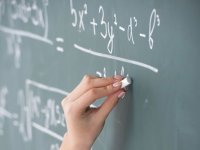Developing a Mathematics Teacher Knowledge Framework
Your content has been saved!
Go to My Saved Content.In our two-semester elementary mathematics methods course at Texas Christian University, some of our preservice teachers (PSTs) have simplified perceptions about the nature and teaching of mathematics. They are able to perform familiar procedures or recall terms, but often lack a deep understanding of underlying concepts and are often unaware of the multi-dimensional nature of teacher knowledge (TK).
Because TK research guides the work of mathematics educators, PSTs implicitly explore various domains of TK through their coursework. Our work over the past two years has been guided by this question: how can we explicitly incorporate TK into our course? In the past, we showed the PSTs different TK frameworks, but the frameworks seemed disconnected from the curriculum, and the domains and their descriptions were merely a string of words. We realized that this approach contradicted the educational philosophy guiding our courses, wherein students have multiple opportunities to build an understanding of a concept, and then, based on these experiences, students create their own definitions that have an intrinsic meaning because they were developed from the students' constructed understanding.
We decided to follow a similar approach for TK. Over the first semester, we provided a sequence of activities that resulted in each of our classes generating a TK framework:
- Weeks 4 and 5: PSTs read a case study about a procedurally-oriented lesson on addition of whole numbers and the subsequent student struggles. The PSTs made a list of teacher actions that contributed to the struggles.
- Week 6: PSTs created a list of what a teacher needs to know in order to effectively teach addition.
- Weeks 9 and 10: Using the two lists, the PSTs generated an initial TK framework by categorizing the items and then naming and describing each category.
Since PSTs generated the frameworks, they vary in form and organization, but have many similarities. For instance, each year PSTs generate a category related to student thinking.
Category: Category Description:
- Year 1, Student (Prior) Knowledge: Teachers know students' prior knowledge, learning styles, developmental stages, common student misconceptions, and how to analyze errors constructively. In doing this, teachers have the ability to teach all types of students.
- Year 2, Flexible Thinking: Teachers need to know what students understand and how to build on that understanding. Teachers need to adapt lessons based in students' needs and learning abilities, as well as reflect on instruction during and after a lesson to make adaptations.
For the remainder of the semester, we make explicit connections between the framework and class activities, journal responses to readings, and a long-term project.
Class Activities and Follow-Up Discussions
We often follow class activities with a closing discussion connecting the activity and framework. For instance, during the first year, the PSTs identified the core ideas for data analysis and linked them to the framework.
Similarly, during the second year, the PSTs correlated the core ideas for geometry with the framework.
Journal Responses
Weekly, the PSTs read a practitioner journal article and respond in writing to prompts, several of which incorporate the TK framework. For instance, the PSTs read an article about teaching fraction multiplication using an area model and responded to the prompt:
The following are excerpts from first and second year responses, respectively.
Unit Plan
For the second semester, the PSTs designed a unit plan that included a reflective component identifying and describing at least one specific example for each category in the framework that they drew upon while preparing the unit. One group, who created a geometry unit, wrote:
Finding Value in TK
During carefully sequenced activities, the PSTs developed an understanding of the multiple domains of TK and articulated these in their self-generated frameworks. Thus, they developed a more nuanced understanding of the multiple demands on teachers and learned that teaching mathematics requires more than the ability to do mathematics. In providing feedback on the course, one PST wrote:
How have you deepened your discipline-specific teacher knowledge?
